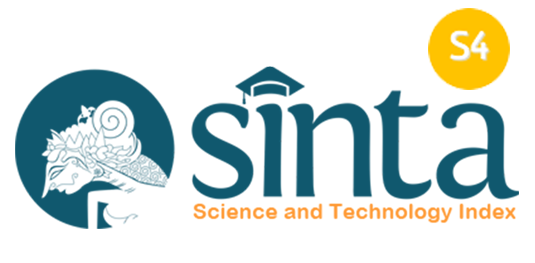EFFECTIVENESS OF ABDOMINAL STRETCHING EXERCISE AND PROGRESSIVE MUSCLE RELAXATION ON REDUCING THE INTENSITY OF DYSMENORRHEA IN ADOLESCENT GIRLS
Downloads
Introduction: Abdominal exercises help reduce pain by increasing blood circulation to the abdominal region, reducing muscle spasms, and improving flexibility of the uterine muscles. Muscle relaxation progressively reduces muscle tension and stress, which can worsen menstrual pain. This combination significantly reduces dysmenorrhea intensity, increases comfort, and supports the quality of life among adolescent girls. This study aimed to determine the effectiveness of abdominal stretching exercises and progressive muscle relaxation on reducing dysmenorrhea in teenage girls in Meluntur Village. Methods: This study used a quantitative approach with a quasi-experimental design, namely a two group pre-test and post-test control group design. A sample of 24 respondents was divided into two groups. The abdominal stretching exercise intervention was carried out on the first to third day of menstruation for 15 minutes twice a day, morning and evening. Progressive muscle relaxation intervention was carried out on the first to third day of menstruation for 15-30 minutes with a frequency of once a day, in the morning. The dependent variable was pain intensity in dysmenorrhea as measured by a numerical measurement scale. Results: The Wilcoxon test results for the abdominal stretching exercise group showed a p value = 0.025 (α<0.05) and for the progressive muscle relaxation group p value = 0.046 (α<0.05). The Mann Whitney test results showed a p value = 0.660 (α <0.05), indicating that there was no difference in the decrease in dysmenorrhea after the two interventions, because both helped reduce the intensity of dysmenorrhea. Conclusions: Adolescent girls who experience dysmenorrhea can perform either of these interventions.
Andrews, G. (2010). Textbook of Women's Reproductive Health. 2nd edition. Jakarta: EGC
Anurogo, Dito & Wulandari, A. (2011). Cara Jitu Mengatasi Nyeri Haid. Yogyakarta: CV Andi Offset.
Ernawati. (2011). Terapi Relaksasi Teerhadap Nyeri Dismenore pada Mahasiswa Universitas Muhammadiyah Semarang. Retrieved June 09, 2021, from http://download.portalgaruda.org/article.php?article=4294&val=426
Faridah, BD. et. all. (2019). Influence Abdominal Stretching Exercise Against Reducing Menstrual Pain in Adolescent Girls. Journal Health Science, 3(2), 68-73. http://dx.doi.org/10.33757/jik.v3i2.207
Fauziah., Mia Nur. (2015). The Effect of Abdominal Stretching Exercise on Intensity of Menstrual Pain (Dysmenorrhea) in Adolescent Girls at Al Furqon Vocational School Bantarkawung Brebes Regency. Retrieved December 08, 2020, from https://repository.uinjkt.ac.id/dspace/bitstream/123456789/28982/1/MIA%20NUR%20FAUZIAH-FKIK.pdf.
Fitriyani. (2018) Influence Providing Relaxation Techniques Muscle Progressive to Reducing Menstrual Pain in Adolescents in Cottage Islamic Boarding School Stem Mourning of Padang City in 2018. Thesis, Padang Pioneer Health College.
Hartati, Walin, & Widayanti, E. D. (2012). Pengaru Tehnik Relaksasi Front Efflurage terhadap Nyeri Dismenorea. Jurnal Riset Kesehatan, 4(3), 793-797.
Junizar. (2011). Kesehatan Reproduksi Untuk Mahasiswa Kebidanan Dan Keperawatan. Jakarta : Salemba Medika.
Kristina, C., Hasanah O., & Zukhra, R. M. (2019) Perbandingan Teknik Relaksasi Otot Progresif dan Akupresur Terhadap Dismenore Pada Mahasiswi FKP Universitas Riau. Health Care: Health Journal, 10(1), 104-114. https://doi.org/10.36763/healthcare.v10i1.96
Kurniawati. (2016). The Influence of Dysmenorrhea on Activities of Vocational High School Students. Journal Health Society (KEMAS), 6(2), 93-99.
Mitayani dan Sartika, W. (2010). Buku Saku Ilmu Gizi. Jakarta: Trans Info Media.
Maryam. (2016). Relationship between Menstrual Profile and Psychological Stress with Dysmenorrhea. Althea Medical Journal, 3(3), 382-7.
Mitayani dan Sartika, W. (2010). Buku Saku Ilmu Gizi. Jakarta: Trans Info Media.
Potter & Perry. (2010). Reproductive Health. Yogyakarta: Nuha Medika.
Rahmawati, D., & Kusumastuti, M. (2020). Efektivitas Latihan Peregangan Abdominal dan Relaksasi Otot Progresif terhadap Intensitas Nyeri Dismenore pada Remaja Putri. Jurnal Ilmu Keperawatan, 8(1), 12-19.
Rebecca, Luh & Wayan (2019). Prevalensi Dismenore dan Karakteristikanya pada Remaja Putri di Denpasar. Jurnal Medika Udayana, 3(11).
Setyoadi, & Kushariyadi. (2011). Therapy Modality Nursing Care for Psychogeriatric Clients. Jakarta: Salemba Medical
Sugiyono. (2016). Research Methods Quantitative, Qualitative and R&D. Bandung: PT Alfabet.
Sulistyawati. (2012) . Asuhan Kebidanan pada Masa Kehamilan. Jakarta: Salemba Medika
Sulistyorini, Chandra. et al. (2019). Effectiveness of Relaxation Muscle Progressive to Decrease Intensity of Dysmenorrhea Pain in Adolescent Girls. Jurnal Medika Karya Health Science, 4(1), 10-15. https://doi.org/10.35728/jmkik.v4i1.69
Copyright (c) 2025 Lilis Fatmawati, Nabellah Imroatus Sholihah

This work is licensed under a Creative Commons Attribution 4.0 International License.
Copyright Notice
1. The journal allows the author to hold the copyright of the article without restrictions.
2. The journal allows the author(s) to retain publishing rights without restrictions.
3. The legal formal aspect of journal publication accessibility refers to Creative Commons Attribution (CC BY).














